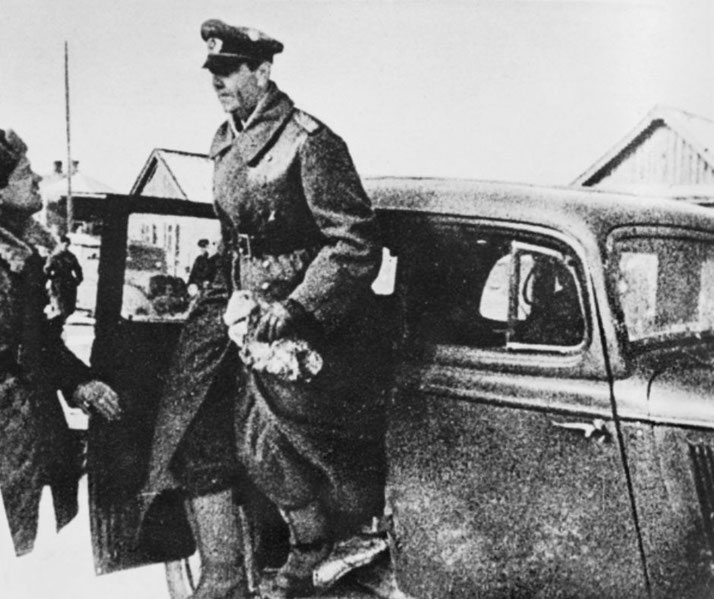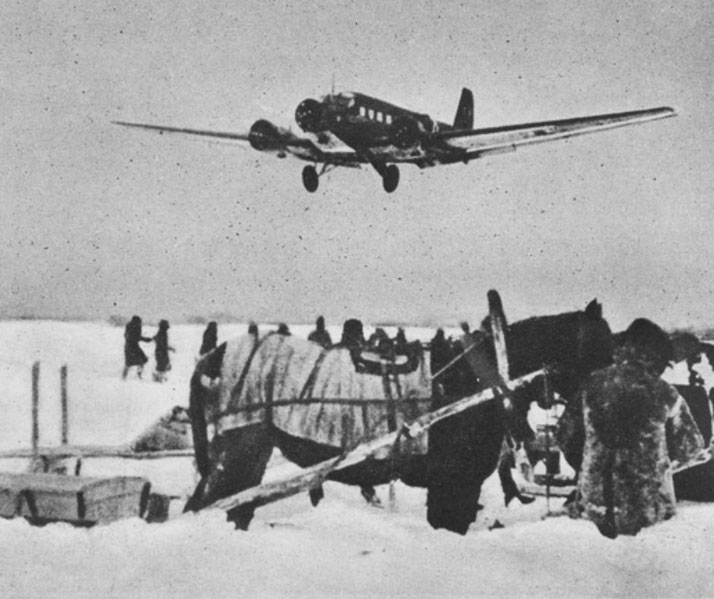The horrifying brutality of Stalingrad: The battle that broke Hitler's Wehrmacht

The Battle of Stalingrad, fought from August 23, 1942, to February 2, 1943, stands as one of the most brutal, bloody, and transformative battles in human history.
It was a turning point in World War II, marking the beginning of the end for Adolf Hitler's Third Reich.
The battle was not just a military confrontation, but a clash of ideologies, with the totalitarian regimes of Nazi Germany and the Soviet Union locked in a struggle that would determine the course of the 20th century.
World War Two before Stalingrad
By the summer of 1942, Nazi Germany, under the leadership of Adolf Hitler, had launched a massive invasion of the Soviet Union known as Operation Barbarossa.
Despite initial successes, the German advance had been halted at the gates of Moscow in the winter of 1941.
As the Wehrmacht regrouped and prepared for a renewed offensive in 1942, Hitler's eyes turned southeast, towards the oil-rich Caucasus and the city of Stalingrad.
Stalingrad (modern Volgograd), named after the Soviet leader Joseph Stalin, held significant strategic and symbolic importance.
Situated on the banks of the Volga River, it was a crucial transport hub and industrial city, producing equipment and supplies for the Soviet war effort.
Symbolically, the city represented the Soviet regime and its resilience. Hitler believed that capturing Stalingrad would deliver a severe blow to Soviet morale and disrupt their supply lines.
On the Soviet side, the Red Army was still reeling from the initial shock of the German invasion.
Despite the successful defense of Moscow, the situation remained precarious. The Soviet Union was in a desperate struggle for survival, with its forces stretched thin and resources strained.
However, the Red Army was rapidly learning and adapting to the realities of the war, and the Soviet leadership understood the importance of holding Stalingrad.
As the summer of 1942 progressed, the German Army Group South was split into two, with Army Group A advancing towards the Caucasus and Army Group B tasked with taking Stalingrad.
How strong were the two armies?
On the German side, the Wehrmacht was considered one of the most effective and well-equipped fighting forces in the world.
The German 6th Army, led by General Friedrich Paulus, was assigned the task of capturing Stalingrad.
The 6th Army was a veteran force, having seen significant action in Poland, France, and earlier in the Soviet Union.
It was supported by units from other Axis powers, including Romania, Italy, and Hungary.
The German forces were well-trained and had a strong tactical doctrine, emphasizing speed, coordination, and the concentration of forces.
However, they were increasingly overextended and faced logistical challenges as they advanced deeper into Soviet territory.
Facing them was the Soviet Red Army. In the early stages of the war, the Red Army had suffered from poor coordination, inadequate training, and the effects of Stalin's purges, which had decimated its officer corps.
However, by the time of the Battle of Stalingrad, it was beginning to recover and adapt.
The Red Army was able to draw on vast reserves of manpower and had the advantage of fighting on home soil.
The Soviet forces defending Stalingrad were a mix of regular army units, local militias, and later, reinforcements from across the Soviet Union.
They were led by a group of capable commanders, including General Vasily Chuikov, who took command of the 62nd Army and would play a crucial role in the city's defense.
As the two forces converged on Stalingrad, they brought with them different strategies and tactics.
The Germans aimed to capture the city quickly using their tried-and-tested blitzkrieg tactics, while the Soviets planned a determined defense, ready to fight for every street, building, and even every room.
The initial German offensive
The first German move towards Stalingrad began in the summer of 1942, as part of the larger Operation Blue.
The German 6th Army, under the command of General Friedrich Paulus, was tasked with capturing the city.
The German forces advanced rapidly, exploiting their advantages in mobility, coordination, and airpower.
By late August, they had reached the outskirts of Stalingrad.
The German strategy was based on their successful blitzkrieg tactics, which emphasized speed, surprise, and encirclement.
The aim was to capture Stalingrad quickly and decisively, avoiding a protracted battle.
The Luftwaffe, the German air force, played a crucial role in the initial stages of the offensive.
On August 23, they launched a massive air raid on Stalingrad, causing widespread destruction and chaos.
The city's defenses were weakened, and the civilian population was thrown into turmoil.
Despite the ferocity of the German assault, the Soviet forces put up a determined resistance.
The Red Army, although outgunned and outmaneuvered in the early stages, managed to hold onto parts of the city.
The urban environment of Stalingrad proved challenging for the German forces, negating some of their advantages in mobility and coordination.
The battle quickly descended into brutal, close-quarters combat, with both sides fighting for control of streets, buildings, and ruins.
By the end of September, the German forces had captured most of Stalingrad. However, the speed and decisiveness of the victory they had hoped for eluded them.
The Red Army, under the command of General Vasily Chuikov, continued to resist fiercely, turning the battle for Stalingrad into a grueling war of attrition.

How the battle turned against the Germans
The turning point of the Battle of Stalingrad came in late November 1942, with the launch of the Soviet counteroffensive, codenamed Operation Uranus.
Until this point, the German 6th Army had been slowly grinding down the Soviet defenders, capturing most of the city.
However, the situation was about to dramatically change.
The Soviet High Command, under the leadership of General Georgy Zhukov, had been planning a counteroffensive for some time.
They had noticed that the German 6th Army was overextended and its flanks were held by weaker Axis allied forces from Romania, Italy, and Hungary.
Zhukov planned to exploit this weakness by launching a massive pincer attack to encircle the German forces in Stalingrad.
Operation Uranus began on November 19, 1942. The Soviet forces attacked the German flanks, achieving complete surprise.
The Romanian forces, ill-equipped and poorly trained, were unable to hold the line, and the Soviet forces broke through.
Within four days, the two Soviet pincers met at Kalach, west of Stalingrad, encircling the German 6th Army and parts of the 4th Panzer Army - a total of about 300,000 men.
The German forces inside the encirclement, known as the "Stalingrad pocket," were now cut off from their supply lines and unable to break out.
Hitler ordered the 6th Army to hold their positions and promised that they would be resupplied by air, a promise that the Luftwaffe was unable to fulfill.
The situation for the encircled German forces rapidly deteriorated, as they faced shortages of food, ammunition, and medical supplies.
The siege and starvation
The conditions inside the encirclement were horrific. The German soldiers, already worn down by months of intense urban warfare, now had to contend with severe shortages of food, ammunition, and medical supplies.
The winter of 1942-43 was particularly harsh, with temperatures dropping to -30 degrees Celsius (-22 degrees Fahrenheit).
The German soldiers, ill-equipped for the Russian winter, suffered terribly from frostbite and exposure.
Despite the dire situation, Hitler ordered the 6th Army to hold their positions, promising that they would be resupplied by air.
However, the Luftwaffe was unable to deliver sufficient supplies to sustain the encircled forces.
The soldiers were reduced to starvation rations, and many resorted to eating horses, dogs, and even rats.
The Soviet forces, meanwhile, tightened the noose around the encircled Germans. They launched repeated attacks to reduce the size of the pocket and wear down the German forces.
The Red Army, despite suffering heavy casualties, was relentless, keeping up the pressure and refusing to let the Germans break out.

The final offensive and the German surrender
By January 1943, the situation for the encircled German forces in Stalingrad had become untenable. Starvation, cold, and constant Soviet attacks had taken a heavy toll.
The German 6th Army, once one of the most formidable formations in the Wehrmacht, was a shadow of its former self.
Despite this, Hitler refused to allow a breakout attempt, insisting that the 6th Army continue to hold its ground.
The Soviet High Command, recognizing that the German forces were on the brink of collapse, planned a final offensive to crush the encirclement.
Codenamed Operation Ring, the offensive began on January 10, 1943. The Red Army, reinforced and well-supplied, launched a series of attacks against the weakened German lines.
Despite fierce resistance in some sectors, the German defenses were gradually pushed back.
By the end of January, the situation was desperate for the German forces. On January 31, General Friedrich Paulus, the commander of the 6th Army, was promoted to Field Marshal by Hitler.
The promotion was a grim message - no German Field Marshal had ever been captured, and it was expected that Paulus would commit suicide rather than surrender.
However, Paulus defied Hitler's expectations. On February 2, 1943, he surrendered to the Soviet forces, marking the end of the Battle of Stalingrad.
How significant was the Battle of Stalingrad?
The defeat of the German 6th Army was a severe blow to the Wehrmacht and a major setback for Hitler's plans.
The loss of an entire army, along with the failure of the strategic objectives of the 1942 summer offensive, marked the beginning of a series of defeats for Nazi Germany.
The human cost of the battle was staggering. The German 6th Army started the battle with over 250,000 soldiers, but by the end, only about 91,000 remained to surrender, and only about 5,000 of these would survive Soviet captivity.
The Red Army also suffered heavy casualties, with estimates ranging from 1 to 1.5 million killed, wounded, or captured.
The civilian population of Stalingrad suffered immensely, with many dying from the fighting, bombing, starvation, or exposure.
Strategically, the victory at Stalingrad marked a turning point in the war on the Eastern Front.
The initiative had passed to the Soviet Union, and the Red Army began a series of offensives that would eventually take them to Berlin.
The myth of German invincibility was shattered, boosting the morale of the Allies and leading to increased resistance against the Axis powers on all fronts.
The psychological impact of the battle was also significant. The defeat at Stalingrad was a blow to German morale and a boost to the Soviet Union.
The battle became a symbol of Soviet resistance and the brutality of the Eastern Front. It was used extensively in Soviet propaganda to galvanize the population and maintain the momentum of the war effort.
What do you need help with?
Download ready-to-use digital learning resources
Copyright © History Skills 2014-2025.
Contact via email
With the exception of links to external sites, some historical sources and extracts from specific publications, all content on this website is copyrighted by History Skills. This content may not be copied, republished or redistributed without written permission from the website creator. Please use the Contact page to obtain relevant permission.





